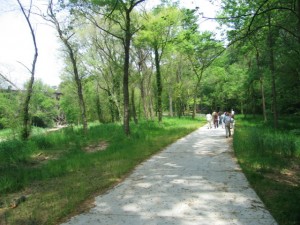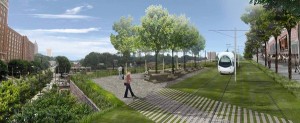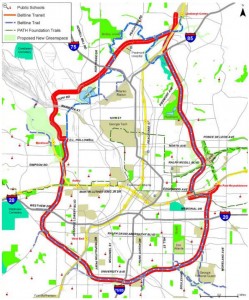09 May Atlanta Beltway Project, a Healthy Way to Move
The Atlanta Beltway Project seeks to convert abandoned rail lines around the city into an interconnected, multi-use transportation corridor. Not only will hikers and bikers be able to use the pathways to get around, but the well landscaped trails will serve as green space to enjoy in a heavily urbanized area. Portions of the Atlanta Beltway Project already have finished trails while others remain in a rough state, but are still hikeable.
 Future plans calls for the Atlanta Beltway project to contain trolleys and light rail. It is hoped that the endeavor will lead to redevelopment of adjacent areas in addition to serving both recreational and transport needs. Atlanta is one of the many metropolitan areas that are developing such a multi-use transportation scheme.
Future plans calls for the Atlanta Beltway project to contain trolleys and light rail. It is hoped that the endeavor will lead to redevelopment of adjacent areas in addition to serving both recreational and transport needs. Atlanta is one of the many metropolitan areas that are developing such a multi-use transportation scheme.
The Atlanta Beltway Project was originally formulated as a master’s thesis by Ryan Gravel who was a student at Georgia Tech when he submitted his work in 1999. Gravel now works in the Atlanta Planning Department. He was bothered by the dearth of transportation alternatives in the area and developed his notions with the help of friends in the transportation field.
Gravel sent copies of his work to numerous civic and business leaders in the region in 2000. His plans were endorsed by several city council members along with then Mayor Shirley Franklin. They saw the Atlanta Beltway Project as a means to revitalize neighborhoods along with a way to aid transportation. The Georgia Department of Transportation along with a pair of private railroads owned most of the track at the time.
Altogether, the Atlanta Beltway project is 22 miles in circumference. It encircles an elongated section of Atlanta’s business district. It envisions the redevelopment of over 2500 acres adjacent to the pathways and park areas of the corridor itself. A series of thirteen parks will be linked by trails for walkers and bike riders.


